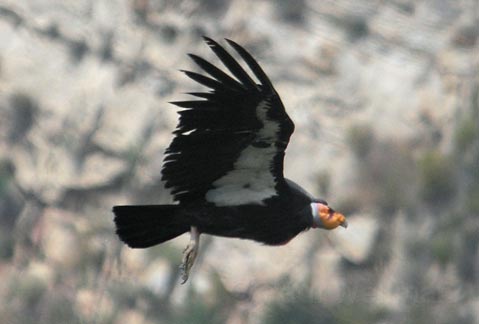California’s Condor Population Tops 100
Captive Breeding of Endangered Species Showing Signs of Progress

Although some of the people featured in a story about the California Condor Program published by The Indyearlier this year questioned whether the majestic Gymnogyps californianus with a nine-foot wingspan can or should be brought back from the brink of extinction, last week brought further signs that the effort is succeeding.
The wild population of California condors officially surpassed 100 in the state, a milestone that marks significant progress since recovery efforts began in 1982 when the population hit a low of 22.
The successful population increase is due to a captive breeding program coordinated by the U.S. Fish and Wildlife Service including several state and local partners among which is the Santa Barbara Zoo.
Jesse Grantham, California condor program coordinator, said in a press release, “This achievement is a testament to the work of our biologists in the field and the efforts of our public and private recovery program partners.”
California condors are bred in captivity at the Los Angeles Zoo, the San Diego Wild Animal Park, the Oregon Zoo and the Peregrine Fund’s World Center for Birds of Prey in Boise, Idaho. When they reach the age of one year, these condors are released from two locations, Pinnacles National Monument southeast of Monterey and Bitter Creek National Wildlife Refuge on the southwestern edge of San Joaquin Valley (due east of Santa Maria).
The goal of the recovery effort is to foster two separate populations of 150 condors, one in California and one in Arizona, each with at least 15 breeding pairs. The California population stretches from Los Angeles County to just south of San Francisco between the Sierra Nevadas and the coastal range.
Seven more juveniles are scheduled for release in the next two-and-a-half months. In addition to the condors bred in exile, 16 have been born and raised in the wild since 2004.
The Santa Barbara Zoo participates in the California Condor Program by providing medical support and recruiting and training volunteer nest-monitors. The zoo also houses five members of the native species.


